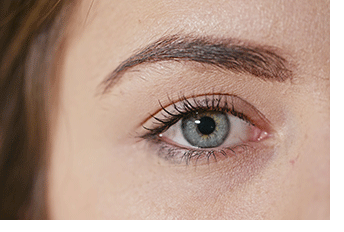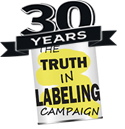RISK

Retinal Degeneration
In 1957, Lucas and Newhouse first noticed that severe retinal lesions could be produced in suckling mice (and to some extent in adult mice) by a single injection of glutamate (26). Studies confirming their findings using neonatal rodents (49-52) and adult rabbits (53) followed shortly, with others being reported from time to time (54-58). These studies concerned themselves not only with the confirmation of monosodium glutamate induced retinal lesions, but with the formulation and testing of hypotheses to explain the phenomenon.In 2002, Ohguro et al. found that rats fed 10 grams of sodium glutamate (97.5% sodium glutamate and 2.5% sodium ribonucleotide) added to a 100 gram daily diet for as little as 3 months had a significant increase in amount of glutamic acid in vitreous, had damage to the retina, and had deficits in retinal function (27).
Ohguro et al. also documented the cumulative effect of damage caused by daily ingestion of the food additive called monosodium glutamate or MSG.
Other reports of toxic effects of monosodium glutamate on the retina have come from studies at the University of Pecs, Hungary, where the neuroprotective effects of PACAP in the retina have been studied (28,29).
References
26. Lucas DR, Newhouse JP. The toxic effect of sodium-L-glutamate on the inner layers of the retina. AMA Arch Ophthalmol. 1957;58(2):193-201.27. Ohguro H, Katsushima H, Maruyama I, et al. A high dietary intake of sodium glutamate as flavoring (Ajinomoto) causes gross changes in retinal morphology and function. Exp Eye Res. 2002;75(3):307-15.
28. Babai N, Atlasz T, Tamas A, et al. Search for the optimal monosodium glutaamte treatement schedule to study the neuroprotective effects of PACAP in the retina. Ann N Y Acad Sci. 2006;1070(July):149-155.
29. Szabadfi K, Atlasz T, Horvath G, et al. Early postnatal enriched environment decreases retinal degeneration induced by monosodium glutamate treatment in rats. Brain Res. 2009;1259(March):107-12.
49. Potts AM, Modrell RW, Kingsbury C. Permanent fractionation of the electroretinogram by sodium glutamate. Am J Ophthalmol. 1960;50(Nov): 900-907.
50. Freedman JK, Potts AM. Repression of glutaminase I in the rat retina by administration of sodium L-glutamate. Invest Ophthalmol. 1962;1(Feb):118-121.
51. Freedman JK, Potts AM. Repression of glutaminase I in rat retina by administration of sodium L-glutamate. Invest Ophthal. 1963;2(June):252-258.
52. Potts AM. Selective action of chemical agents on individual retinal layers. In: Graymore CN, ed. Biochemistry of the retina. New York: Academic Press; 1965:155-161.
53. Hamatsu T. Experimental studies on the effect of sodium iodate and sodium L-glutamate on ERG and histological structure of retina in adult rabbits. Acta Soc Ophthalmol Jpn. 1964;68(11):1621-1636. (Abstract)
54. Hansson HA. Ultrastructure studies on long-term effects of MSG on rat retina. Virchows Arch [Zellpathol]. 1970;6(1):1-11.
55. Cohen AI. An electron microscopic study of the modification by monosodium glutamate of the retinas of normal and "rodless" mice. Am J Anat. 1967;120(2):319-356.
56. Olney JW. Glutamate-induced retinal degeneration in neonatal mice. Electron-microscopy of the acutely evolving lesion. J Neuropathol Exp Neurol 1969;28(3):455-474.
57. Hansson HA. Scanning electron microscopic studies on the long term effects of sodium glutamate on the rat retina. Virchows Arch ABT B (Zellpathol). 1970;4(4):357-367.
58. Arees E, Sandrew B, Mayer J. MSG-induced optic pathway lesions in infant mice following subcutaneous injection. Fed Proc. 1971;30(2):287Abs (Abstract # 521).

